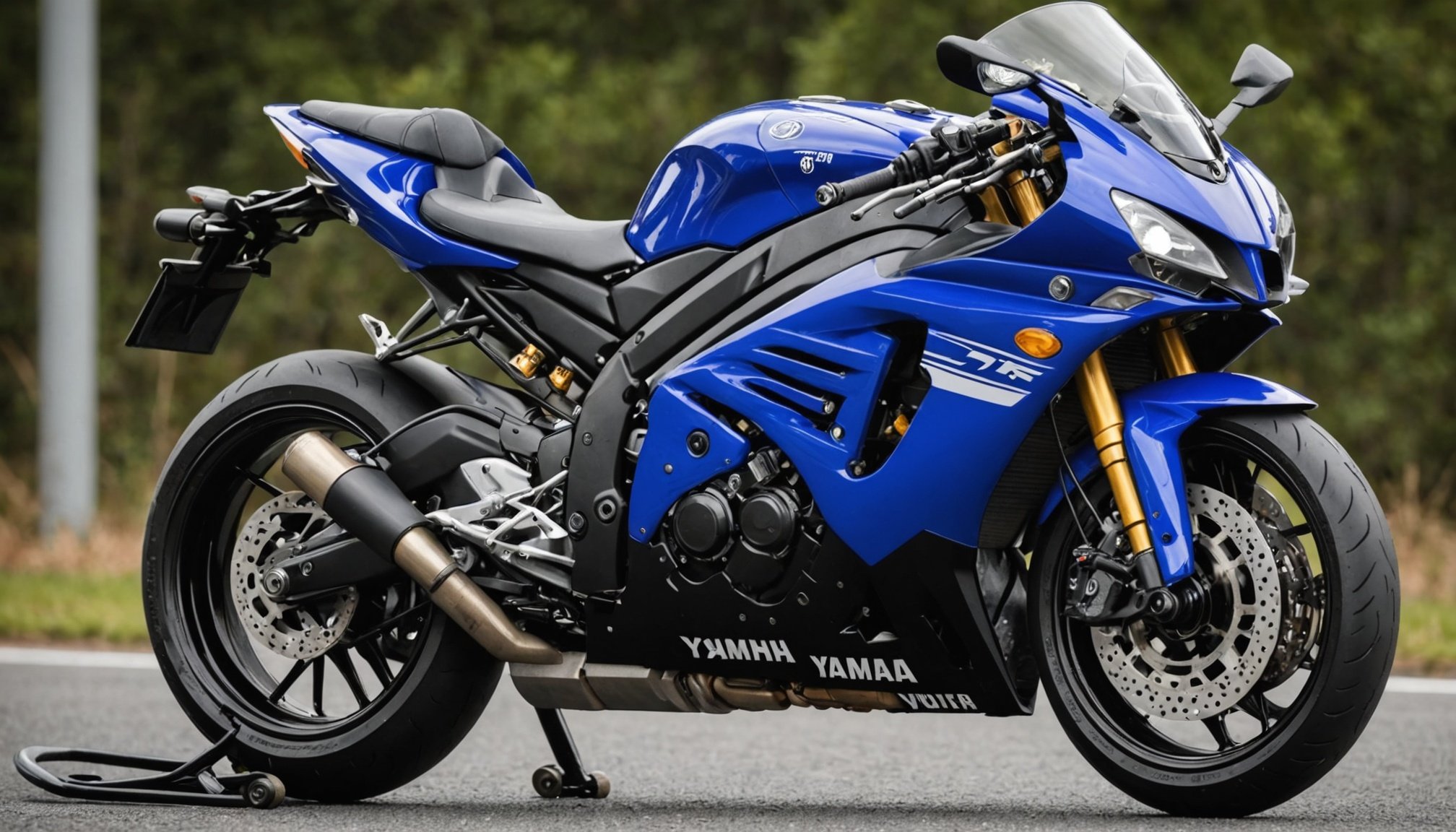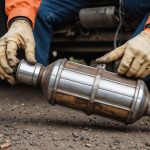Unlocking Perfect Valve Timing: The Ultimate Handbook for Your Yamaha YZF-R1
Understanding the Heart of Your Yamaha YZF-R1
When it comes to the Yamaha YZF-R1, one of the most critical components that define its performance is the valve timing system. This intricate mechanism is what sets the R1 apart from other motorcycles, making it a powerhouse on both the track and the road. In this handbook, we will delve into the world of valve timing, exploring how it works, its importance, and how you can optimize it for the best riding experience.
The Role of Valve Timing
Valve timing is the precise coordination of when the intake and exhaust valves open and close in relation to the piston’s movement. This timing is crucial because it affects the engine’s ability to draw in air and fuel, and to expel exhaust gases efficiently. On the Yamaha YZF-R1, this is managed by the advanced Chip Controlled Intake (YCC-I) system and the refined rocker-arm valvetrain.
In parallel : Unlocking cylinder head torque: the ultimate guide for your royal enfield bullet 500 enthusiast
"The YCC-I system broadens the spread of power across the entire rpm range by actively adjusting the length of the intake based on engine speed," - Yamaha Technical Manual.
How Valve Timing Works on the Yamaha YZF-R1
The Yamaha YZF-R1 features a liquid-cooled, DOHC, 16-valve (4-valves per cylinder) inline-four engine. Here’s a detailed look at how the valve timing is managed:
Chip Controlled Intake (YCC-I)
The YCC-I system is a variable intake system that adjusts the length of the intake tract based on engine speed. This ensures that the engine receives the optimal amount of air and fuel at all rpm ranges, resulting in a broad spread of power.
Also to read : Ultimate diy guide: mastering rear brake pad replacement on your ducati streetfighter v4 with expert insights and techniques!
"By creating a smaller and shorter intake tract, the fuel injectors are able to spray fuel directly against the intake valves for improved fuel atomization," - Yamaha YZF-R1M Guide[2].
Refined Rocker-Arm Valvetrain
The compact rocker-arm valve actuation uses optimized geometry to allow for larger valve lift than conventional cam-driven systems. This design reduces friction losses by using lower cam lobes and reduced spring pressure.
| Component | Description |
|
|-----------------------------------------------------------------------------|
| Valve Actuation | Compact rocker-arm valve actuation |
| Cam Lobes | Lower cam lobes to reduce friction losses |
| Spring Pressure | Reduced spring pressure |
| Valve Lift | Larger valve lift compared to conventional systems |
Optimizing Valve Timing for Performance
To get the most out of your Yamaha YZF-R1, optimizing the valve timing is essential. Here are some practical tips and insights:
Regular Maintenance
Regular maintenance is key to ensuring that your valve timing remains optimal. Here are some tasks to include in your routine:
-
Spark Plug Replacement: Ensure that your spark plugs are in good condition. Worn-out spark plugs can affect engine performance and valve timing.
“`quote
“Spark plugs should be replaced every 16,000 miles or as specified in the service manual,” – Yamaha Service Manual.
“` -
Engine Oil Changes: Use the recommended engine oil and change it at the intervals specified in the service manual.
“`quote
“Using the correct engine oil is crucial for maintaining the health of your engine and its components,” – Yamaha Dealer.
“` -
Valve Clearance Check: Regularly check the valve clearance to ensure it is within the specified range.
“`quote
“Valve clearance should be checked every 26,000 miles or as specified in the service manual,” – Yamaha Service Manual.
“`
Fine-Tuning with Yamaha Ride Control (YRC)
The Yamaha YZF-R1 features an advanced electronics package known as Yamaha Ride Control (YRC). This system includes several functions that can be fine-tuned to optimize performance:
-
Traction Control System (TCS): Adjust the TCS settings to monitor and reduce unwanted wheel spin during hard acceleration.
“`quote
“The TCS offers ten separate settings enabling the rider to dial in the exact level of control needed,” – Yamaha YZF-R1 Guide[1].
“` -
Slide Control System (SCS): Use the SCS to regulate power delivery and control the motorcycle’s cornering attitude.
“`quote
“The SCS features four settings to suit rider preferences and track conditions,” – Yamaha YZF-R1 Guide[1].
“` -
Launch Control System (LCS): Optimize your racing starts with the LCS, which limits maximum engine rpm and throttle plate opening.
“`quote
“The LCS offers three setting levels to adjust engine control and output,” – Yamaha YZF-R1M Guide[2].
“`
Comparative Analysis: Yamaha YZF-R1 vs. BMW S 1000 RR
When considering the performance of the Yamaha YZF-R1, it’s often compared to other high-performance motorcycles like the BMW S 1000 RR. Here’s a comparative look at their valve timing and engine management systems:
Engine Specifications
| Motorcycle | Engine Type | Displacement | Max Power | Max Torque |
|---|---|---|---|---|
| Yamaha YZF-R1 | Inline-4, DOHC | 998 cc | 200 HP | 83.2 ft-lb |
| BMW S 1000 RR | Inline-4, DOHC | 999 cc | 205 HP | 83 LB-FT |
Valve Timing and Engine Management
-
Yamaha YZF-R1:
-
Chip Controlled Intake (YCC-I)
-
Refined rocker-arm valvetrain
-
Yamaha Ride Control (YRC) with TCS, SCS, LCS, and more
-
BMW S 1000 RR:
-
ShiftCam variable valve timing
-
Advanced electronics package with M quick throttle and “Pro” ride modes
"The ShiftCam engine in the BMW is able to make just as much torque across the rev range thanks to variable valve timing," - TopSpeed[3].
Practical Tips for Riding and Maintaining Your Yamaha YZF-R1
Here are some practical tips to enhance your riding experience and maintain your motorcycle:
Riding Techniques
-
Brake Control: Use the advanced brake system effectively. The dual 320 mm front discs with monobloc calipers provide precise and powerful stopping.
“`quote
“The high-friction brake pads deliver precise and powerful stopping, allowing you to explore the full potential of this legendary supersport,” – Yamaha YZF-R1 Guide[1].
“` -
Throttle Control: Master the ride-by-wire Yamaha Chip Controlled Throttle (YCC-T) system for smooth and progressive throttle response.
“`quote
“The lightweight ride-by-wire APSG twistgrip gives instant throttle response,” – Yamaha YZF-R1M Guide[2].
“`
Maintenance Checklist
Here is a detailed checklist for maintaining your Yamaha YZF-R1:
-
Fuel Map Adjustment: Ensure the fuel map is optimized for your riding conditions.
“`quote
“Adjusting the fuel map can significantly impact performance and fuel efficiency,” – Yamaha Service Manual.
“` -
Clutch Lever Adjustment: Adjust the clutch lever to your preference for smooth downshifts.
“`quote
“Yamaha’s assist and slipper clutch gives the rider more confident downshifts when entering corners aggressively,” – Yamaha YZF-R1 Guide[1].
“` -
Engine Brake Management: Use the Engine Brake Management (EBM) system to adjust throttle opening, ignition timing, and fuel injection volume.
“`quote
“The EBM adjusts throttle opening, ignition timing and fuel injection volume to give you a choice of three engine braking modes,” – Yamaha YZF-R1 Guide[1].
“`
Optimizing the valve timing on your Yamaha YZF-R1 is a key aspect of unlocking its full potential. By understanding how the Chip Controlled Intake (YCC-I) and refined rocker-arm valvetrain work, and by following the practical tips and maintenance checklist provided, you can ensure your motorcycle performs at its best. Whether you’re on the track or cruising down the highway, the right valve timing and engine management can make all the difference in your riding experience.
"The Yamaha YZF-R1 is a celebrated MotoGP-derived sports bike, and with the right maintenance and tuning, it can deliver unparalleled performance," - Yamaha YZF-R1 Guide[1].











